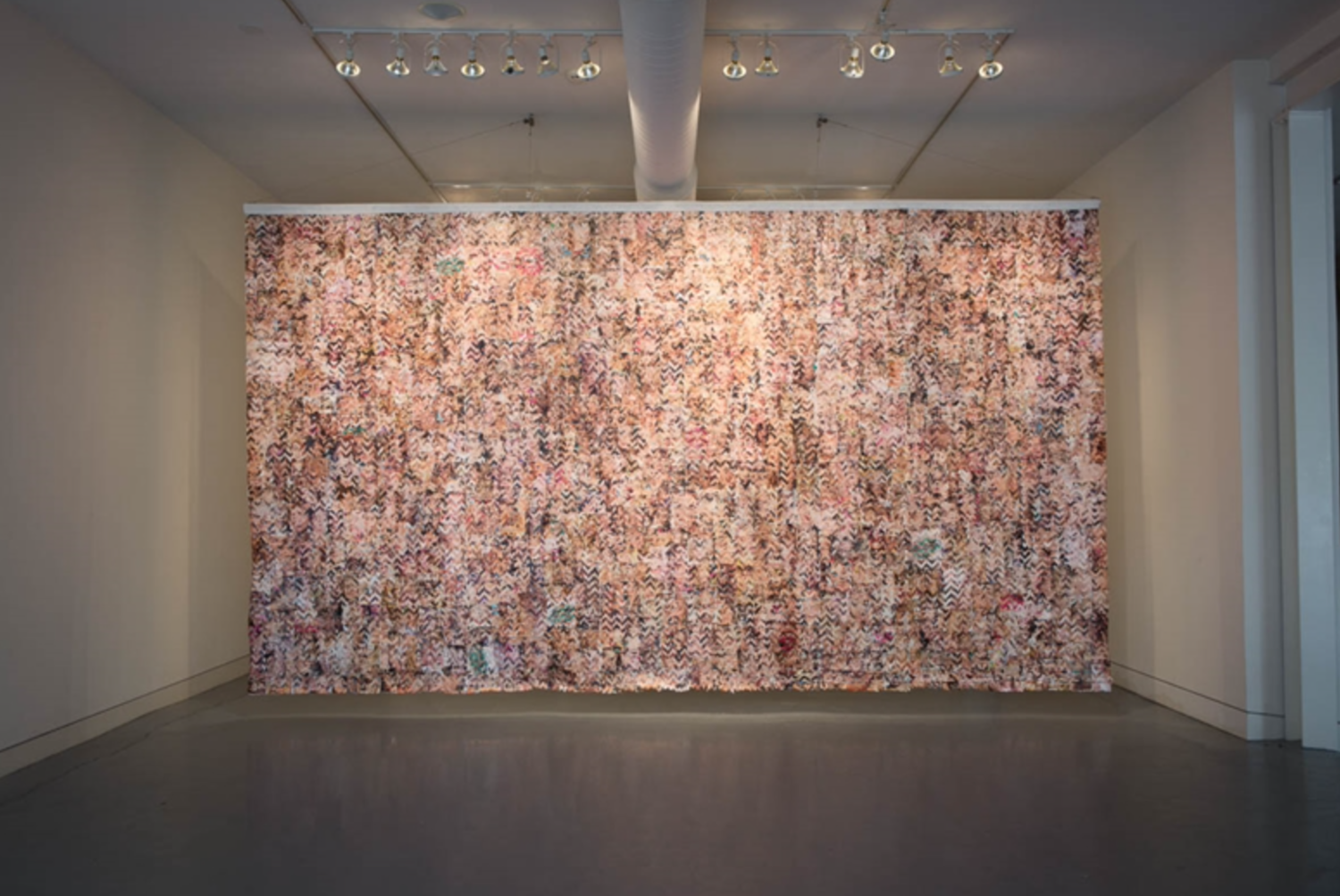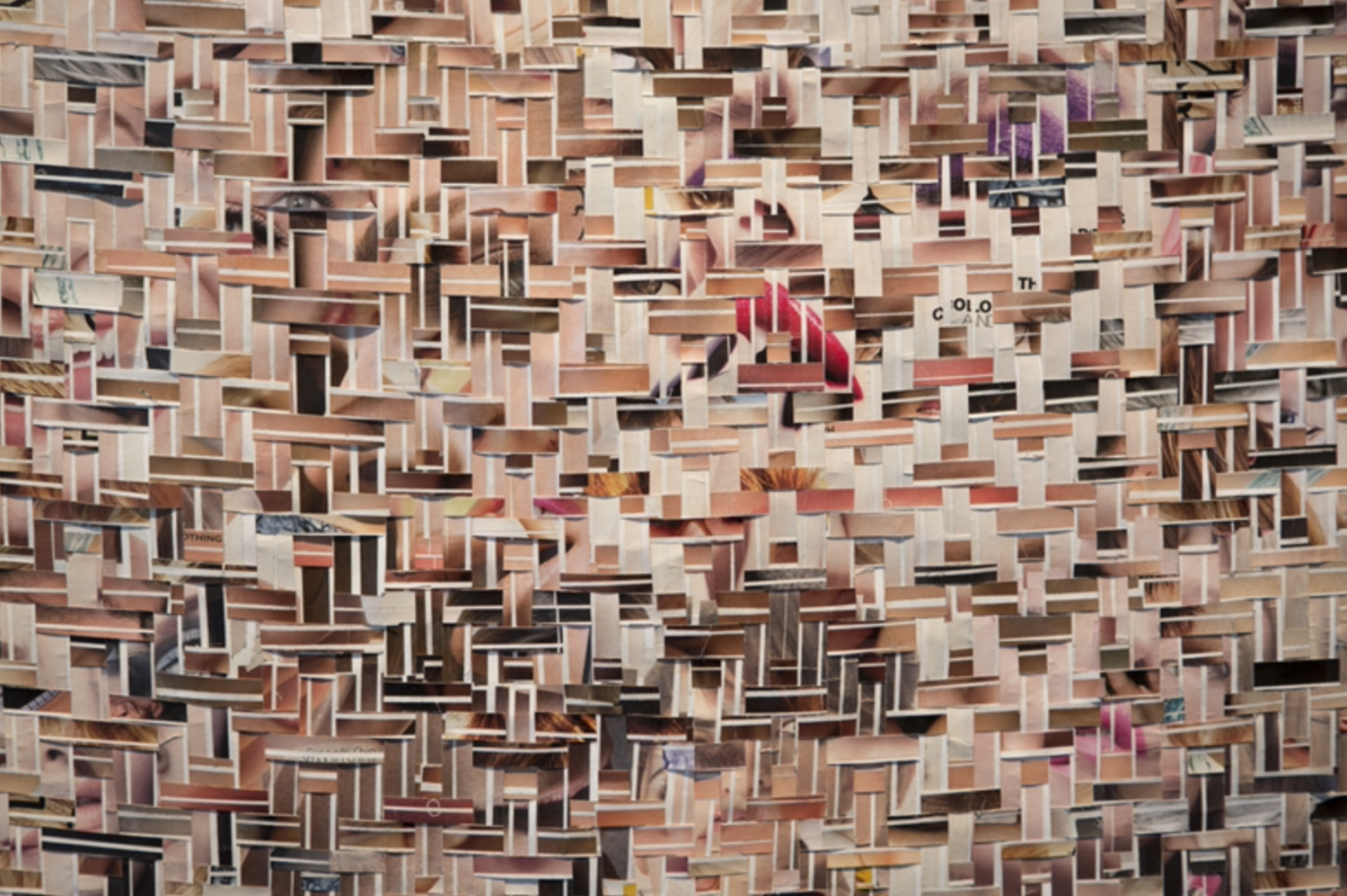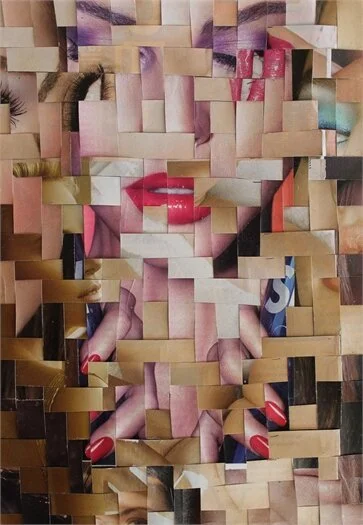Artist Interview: Kim Rice
Kim Rice is a conceptual artist born in Kentucky and raised in California. She received her education from the University of Oklahoma and spent a lot of her life in New Orleans. Rice currently resides in Baltimore, Maryland. As a White woman with Southern and liberal roots living and working in a predominantly Black city, Rice’s large scale installations confront issues of race, identity and personhood.
Tell us a bit about your artistic journey and how it began?
I had a physical injury my sophomore year of high school. At that time I was very focused on sports. Art became a coping mechanism that ended up landing me a college scholarship. I got My BFA from the University of Oklahoma and later taught high school art for 6 years. When my kids were 2yrs and 3 months old I went back for my MFA and that's when my work and practice went to the next level.
Why do you make art?
I see it as a calling. There are many things I love about making - the problem-solving involved, the joy of a finished piece, a happy accident in the studio, or a surprising material. However, it is a difficult career. I believe I am called to this work and if I wasn't I could easily choose a different profession. I do it because I am compelled to.
I really enjoyed reading about your exhibition at the Peale Museum. Can you tell the All She Makes readers how that came to fruition and why it was important for you to make that show?
Inheritance at the Peale Museum functions almost like a retrospective. It is the accumulation of six years of work spanning three floors in the museum that addresses the white race and systemic racism. This project was created through the vision of Peale artistic director Jeffrey Kent.
This exhibition was important because people who identify as White need to participate in the conversation of race. The construct of race was built for white people by white people (even as those who were considered white continually changed). We cannot solve the problems of today like food insecurity, joblessness, the wealth gap, the digital divide, inequities in the public school system, the prison industrial complex, etc if we are not addressing the policies and procedures that got us here in the first place.
The beauty of the Inheritance exhibition is it allowed the work to not only be in dialogue with each other but also the historical presence of the building itself. I am very proud and grateful for this show.
Who are your greatest artistic influences?
The answer to this question continually changes. However, my influences over the years have been EL Anatsui, Shan Goshorn, Sonya Clark, Nicholas Galanin and mentors Michael Ray Charles, Don Longcrier, and Marwin Begaye
What is your favorite body of work/exhibition that you have worked on?
I would say WhiteSide at Mainsite Contemporary in 2015. This work took so much from me physically, emotionally, and mentally. When the 11ft x 20 ft piece was installed I almost couldn't believe I had done it. It was a clear departure from my former work and paved the way for my career as an artist.
Any events, shows, or projects coming up you'd like to share with the readers?
I am excited and focused on a new body of work that will be exhibited at the Black Wall Street Gallery in SOHO this September.
We are strong believers that the more people discuss failure or setbacks, the less significant the possibility of it becomes. In our society, we are so terrified of the possibility of something not working out, that it halts all our efforts to begin with. We ask all of our interviewees if they can share a time where something (a project or opportunity) did not work out and how did you move forward?
For me failure and setbacks are completely integrated into my practice. This is why it is such a difficult field. It is a constant re-calibration. I apply for exhibitions and opportunities and get rejected more times than I get accepted. I would be lying if I said it didn't hurt. It is hard not to question yourself at times. However, I always go back to art. I make because I am compelled to - because it is my calling. With particularly difficult studio or opportunity failures I treat it like a bad breakup. I give myself a couple of hours to be sad then I get an iced coffee, crank up Beyonce and go back to the studio telling myself I will prove everyone wrong and be even better.
Bio
Kim Rice creates large-scale works using common materials. Her installations are a meditation on systemic racism and the policies that continue to affect American society today.
Kim earned her BFA in Sculpture and MFA in Printmaking from the University of Oklahoma. Her work has been shown throughout the country including the Alexandria Museum of Art, the Fred Jones Museum of Art, the Northern Illinois Art Museum, the Delaware Museum of Art, the Peale Museum, and Prospect 4 Satellite. She has received multiple awards, including the McNeese Grant for Socially Engaged Practice.
Born in Kentucky, raised in California, educated in Oklahoma, loved in New Orleans, and now home in Baltimore, Kim’s work is influenced by her two children and the pile of books by her bed.
Artist Statement:
Tell the truth, to yourself and to the children – Maya Angelou
Like many Americans I was taught the story of the United States growing up - great founding fathers, equality for all, and hard work creates wealth - the American Dream. And while there is some truth to this narrative it left out a large part of history, creating a disconnect in the America I experienced as a young adult.
By researching the construction of race in our country and my family lineage: immigrants from Sweden in the 1900s, and Irish and English settlers reaching back to the 1600s, the divisions and inconsistencies I experienced began to make sense. Stolen land, the Virginia Slave Codes, the Naturalization Act, Supreme Court cases that decided who was white, Jim Crow Laws, and Redlining… America was built to benefit white people (even as those who were considered white continually changed).
The truth is often held hostage to whatever we accept and believe; therein lies the tension and the conflict. This work dismantles and reconstructs the dissonance we experience in our engagement with truth. School and academic references, family photographs, redlining maps, court documents, and furniture from my home create a space where both the past and present reside. Woven, sewn, and linked together, my work repeats pieces of truth over and over so connections can be made and intentional conversations started. To have a just and equitable country for all people we must first understand our history.
Find and support Kim: http://kimrice.net Instagram: @kimriceartist





